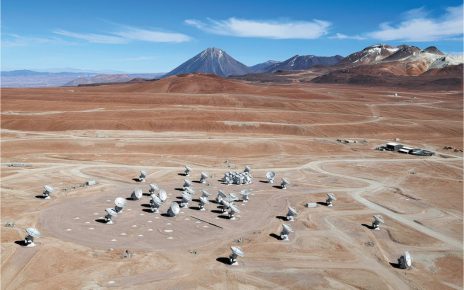A couple of years ago, my family arrived on the island of Maui in Hawaii for a vacation, providing me with the opportunity to visit the Daniel K. Inouye Solar Telescope (DKIST) on Mount Haleakalā (a name which fittingly means in Hawaiian, “house of the sun”). This unusual telescope—which produced its first images of the sun recently, operates only during the day and includes an extensive cooling system that removes the immense heat from its focused sunlight.
To my surprise, the astronomers on site were complaining that the telescope will not collect enough light to follow the motion and spectral features of all its resolution elements on the surface of the sun. Not enough light when you’re staring at the sun? Their complaint reminded me of our persistent desire to collect ever more information, irrespective of how much we already have. In fact, the more knowledge we have, the more we want to learn. Only ignorance brings a lack of passion for further learning.
The steady quest for knowledge gives scientists the exceptional privilege of being able to answer “I do not know” when asked a difficult question. They do not need to pretend knowing more than they actually do, and their success is not measured by the number of likes they get on social media. Other professional disciplines, such as business, politics or religion, do not tolerate an empty answer and do not allow frank transactions of this type.
But cosmologists can receive a full salary while admitting that they do not know what most of the universe is made of, since they have no clue about the nature of dark matter and dark energy. In the commercial or political world, they would have been denied pay until they projected an image of at least pretending to know what they are talking about.
This unusual privilege stems from the understanding that science is work in progress, in which our understanding is incomplete and mistakes should be tolerated. Research into the unknown inevitably involves blunders. We educate ourselves by finding discrepancies between our preconceptions and experimental data. Galileo Galilei dared to check whether heavy objects fall faster than light objects as previously thought and found that they do not; Cecilia Payne-Gaposchkin checked whether the sun has the same composition as the Earth and found that it is made mostly of hydrogen.
Unfortunately, the humility accompanying our never-ending learning experience is sometimes forgotten out of hubris by scientists who boast about preliminary accomplishments and promote their egos by declaring victory prematurely while assuming the end of inquiry. Let me illustrate that with a few examples.
In view of the great advances in physics during the late 19th century, the prominent physicist Albert Michelson argued in 1894: “… it seems probable that most of the grand underlying principles have been firmly established.… An eminent physicist remarked that the future truths of physical science are to be looked for in the sixth place of decimals.” In contrast, over the subsequent several decades, physicists witnessed the emergence of the special theory of relativity, general relativity and quantum mechanics, theories that revolutionized our understanding of physical reality and thus disproved Michaelson’s forecast.
Similarly, string theory started being touted in the early 1980s as a contender for the ultimate “theory of everything” that would unify gravity with quantum mechanics—which Albert Einstein had tried to accomplish in vain. But four decades later we have still not figured out whether it even is a theory of something. Even supersymmetry, to which the theory was originally linked, was not discovered, as many had hoped, by the Large Hadron Collider.
In 1908, Edward Charles Pickering, who served as the director of the Harvard College Observatory, argued that telescopes had reached their optimal diameter of about 70 inches (roughly the height of a person) and that there was no benefit from seeking larger apertures. Today, that same institution is a partner in the construction of the Giant Magellan Telescope with a diameter that is an order of magnitude larger than his stated limit.
Even when experts seal theorems in textbooks, experimental evidence could prove them wrong and expose the limit of their imagination. A notable example is quasicrystals, which are ordered—but not periodic—structures of atoms, and which were considered impossible before they were discovered in nature. Whereas the crystallographic restriction theorem asserted that crystals can possess only two-, three- four- or sixfold rotationally symmetry, the Bragg diffraction pattern of quasicrystals shows other symmetry orders—such as a fivefold symmetry.
Nature is under no obligation to adhere to the limitations of our imagination or instruments. Just as in the case of observing the sun, the collection of refined data can only stimulate additional unanswered questions. There is no end to our pursuit of knowledge.
And like Maui, which is situated in the Pacific Ocean, the body of our scientific knowledge is merely a small island in a vast ocean of ignorance. Scientific research aims to expand the landmass of that island into the unlimited horizon which lies ahead.



